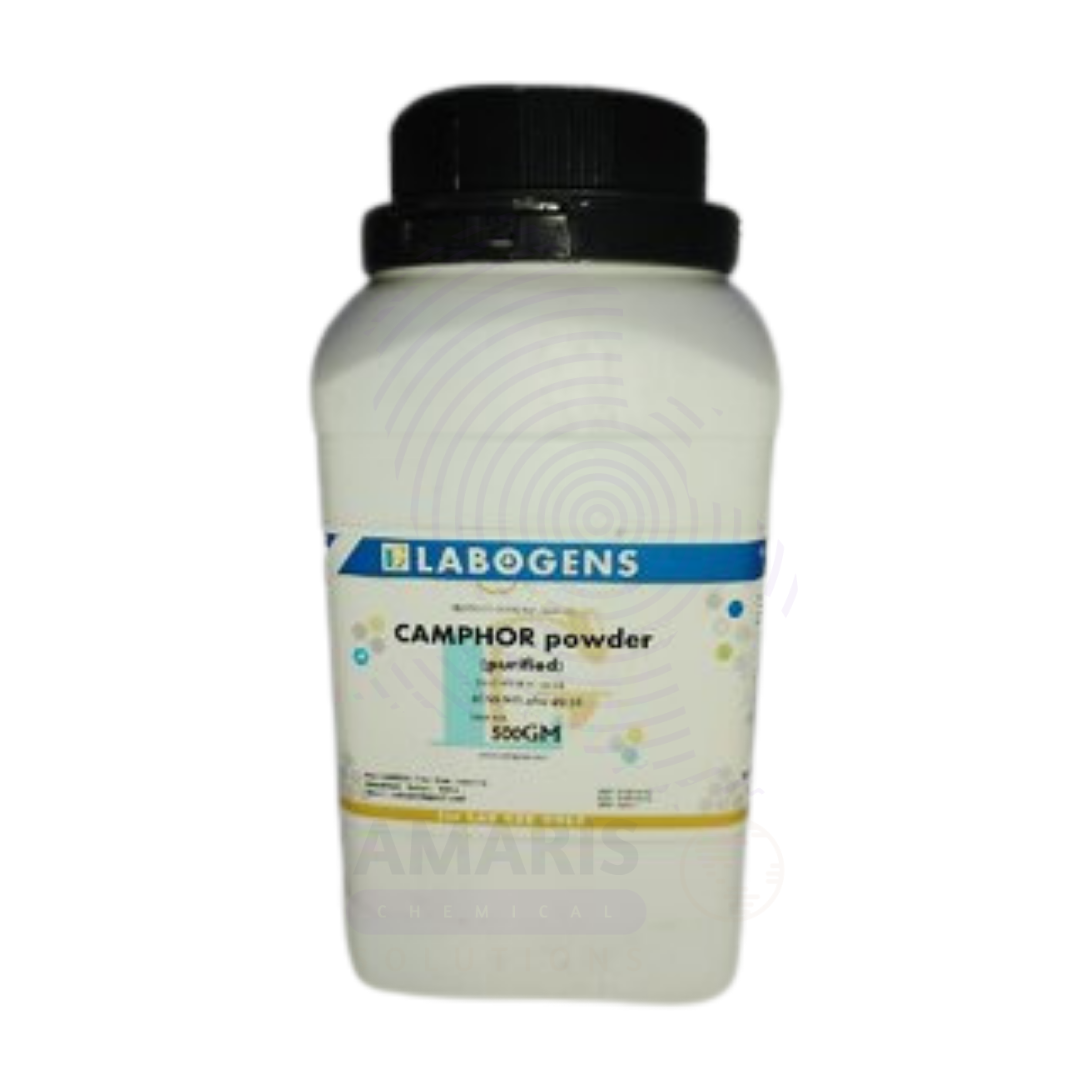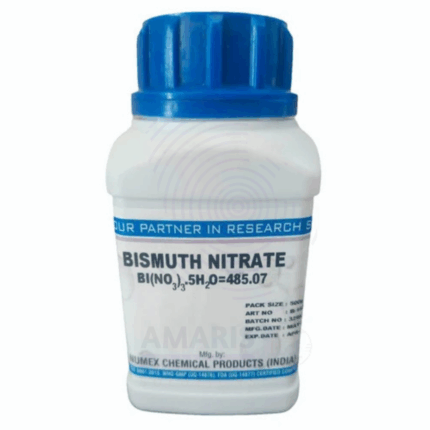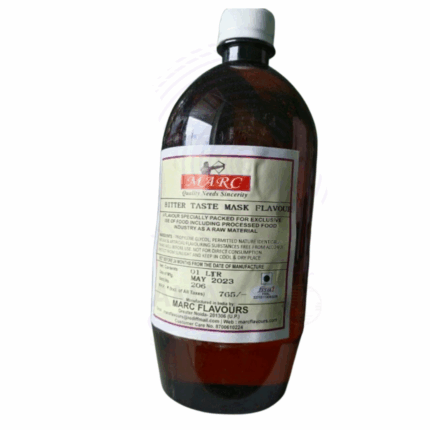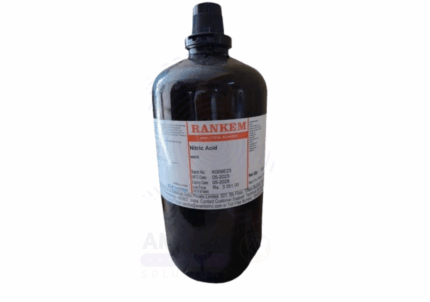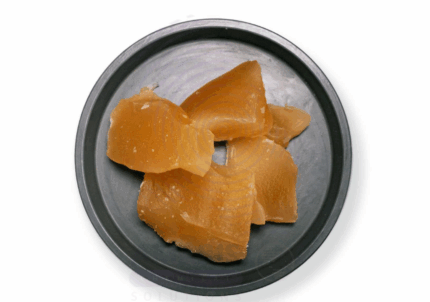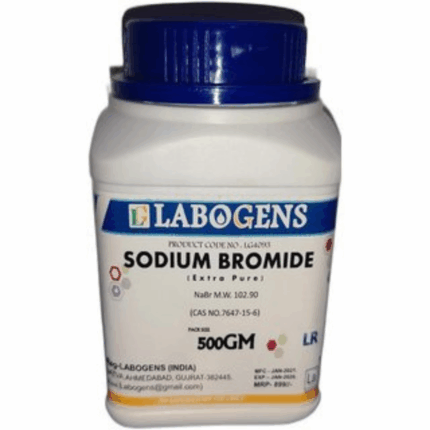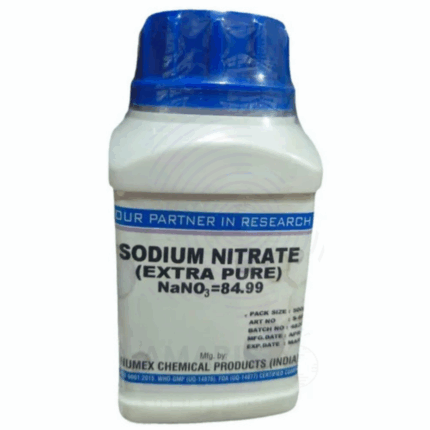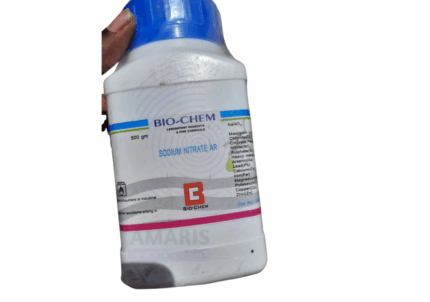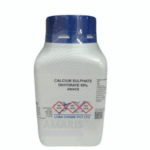
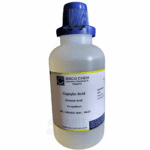
Camphor Powder Extra Pure
$ 17.11
Camphor Powder Extra Pure is a high-purity, crystalline white solid known for its distinct, penetrating aroma and volatility, making it valuable in laboratory applications involving sublimation, volatility studies, and organic compound identification. It is frequently used as a standard in melting point determination and as a model compound for exploring phase changes, vapor pressure, and diffusion behavior. In organic synthesis, it serves as a precursor or reagent in oxidation-reduction reactions. The extra pure grade ensures low impurity levels, which is essential for precise analytical and research work. Due to its flammable and volatile nature, it should be handled in well-ventilated areas and stored in tightly sealed containers away from heat and open flames.
Camphor Powder Extra Pure
Primary Uses
- Sublimation Demonstrations
- Used to illustrate the sublimation process (solid to vapor without passing through liquid), making it a popular teaching tool in physical chemistry labs.
- Organic Compound in Synthesis Experiments
- Acts as a starting material or intermediate in organic synthesis, especially for preparing camphor derivatives.
- Phase Transition Studies
- In thermodynamics labs, used to demonstrate phase changes, volatility, and behavior of volatile solids under controlled temperatures.
- Crystallization & Purity Studies
- Utilized in crystallization experiments to study morphology and purification techniques through recrystallization.
- Standard in Melting Point Determination
- Sometimes used as a known compound in calibration of melting point apparatus due to its sharp and characteristic melting point.
Secondary Uses
- Insect Repellent Studies
- Tested in bioassays or entomology labs to observe repellent activity and volatilization behavior.
- Aroma Compound for Sensory Testing
- Occasionally included in olfactory experiments or sensory science setups to study detection thresholds and perception.
- Solvent Behavior in Herbal Extracts
- Used in labs focused on natural product chemistry or phytochemistry to study extraction from botanical samples.
- Historical Chemistry Demonstrations
- Common in reenactments or educational modules illustrating 19th-century organic chemistry methods.
| PACK SIZE |
250 grams Plastic Tin |
|---|
1. Basic Identification Attributes
- Chemical Name: Camphor
- Chemical Formula: C₁₀H₁₆O
- CAS Number: 76-22-2
- HS Code: 2914.21.00
- Grade: Extra Pure (Laboratory Grade)
- Synonyms: 2-Bornanone, Camphor natural, Gum camphor
2. Physical & Chemical Properties
- Appearance: White crystalline powder
- Odor: Strong, aromatic, characteristic camphoraceous odor
- Molar Mass: 152.23 g/mol
- Melting Point: 175–177 °C
- Boiling Point: ~204 °C (sublimes before boiling)
- Solubility: Slightly soluble in water, highly soluble in alcohol, ether, and chloroform
- Density: ~0.992 g/cm³
- Volatility: Sublimes readily at room temperature
3. Safety & Hazard Attributes
- GHS Classification:
- Flammable solid (Category 2)
- Acute toxicity (oral, Category 4)
- Hazard Statements:
- H228: Flammable solid
- H302: Harmful if swallowed
- Precautionary Statements:
- P210: Keep away from heat/sparks/open flames
- P264: Wash hands thoroughly after handling
- P270: Do not eat, drink, or smoke when using
4. Storage & Handling Attributes
- Storage Conditions:
- Store in a cool, dry, well-ventilated area
- Keep container tightly closed
- Store away from sources of ignition
- Packaging: Sealed HDPE or glass containers
- Handling Precautions:
- Avoid breathing dust
- Keep away from flames or static discharge sources
5. Regulatory & Compliance Attributes
- Transport Classification:
- UN 1325, Flammable solid, organic, n.o.s. (Camphor), Class 4.1
- Disposal Considerations:
- Incinerate in a chemical incinerator with afterburner and scrubber
- Follow local and national environmental regulations
6. Environmental & Health Impact
- Toxicity:
- Toxic in high doses, especially if ingested
- CNS stimulant in small doses; CNS depressant or toxic in larger quantities
- Ecotoxicity:
- Harmful to aquatic life in concentrated form
- Fumes/Dusts:
- Vapor may cause dizziness or irritation
- Flammable dust hazard in air
SAFETY PRECAUTIONS
- Personal Protective Equipment (PPE):
- Wear safety goggles, chemical-resistant gloves, lab coat, and use a dust mask or respirator in case of dust formation.
- Handling:
- Handle in a well-ventilated area or under a fume hood.
- Avoid contact with skin, eyes, and clothing.
- Keep away from heat, flames, and sources of ignition — camphor is combustible.
- Storage:
- Store in a cool, dry, and well-ventilated area, away from oxidizing agents and sources of heat.
- Keep the container tightly closed and properly labeled.
FIRST AID MEASURES
- Inhalation:
- Remove to fresh air.
- If breathing is difficult, give oxygen.
- Seek medical attention if symptoms persist.
- Skin Contact:
- Wash with plenty of water and soap.
- Remove contaminated clothing.
- Seek medical advice if irritation develops.
- Eye Contact:
- Rinse cautiously with water for 15 minutes.
- Lift eyelids occasionally.
- Seek medical attention.
- Ingestion:
- Do not induce vomiting.
- Rinse mouth with water.
- Seek immediate medical attention. Camphor can be toxic if ingested in sufficient quantities.
FIRE FIGHTING MEASURES
- Flammability:
- Highly flammable. May form combustible dust-air mixtures.
- Extinguishing Media:
- Use dry chemical, CO₂, or alcohol-resistant foam.
- Do not use water jets directly on the burning powder.
- Hazardous Combustion Products:
- Emits toxic fumes, including carbon monoxide and carbon dioxide.
- Firefighter Protection:
- Use self-contained breathing apparatus (SCBA) and full protective gear.
- Use self-contained breathing apparatus (SCBA) and full protective gear.


 Preservatives(food)
Preservatives(food) Flavor Enhancers
Flavor Enhancers Acidulants
Acidulants Sweeteners
Sweeteners Antioxidants
Antioxidants Colorants(food)
Colorants(food) Nutraceutical Ingredients (food)
Nutraceutical Ingredients (food) Nutrient Supplements
Nutrient Supplements Emulsifiers
Emulsifiers
 Collectors
Collectors Dust Suppressants
Dust Suppressants Explosives and Blasting Agents
Explosives and Blasting Agents Flocculants and Coagulants
Flocculants and Coagulants Frothers
Frothers Leaching Agents
Leaching Agents pH Modifiers
pH Modifiers Precious Metal Extraction Agents
Precious Metal Extraction Agents
 Antioxidants(plastic)
Antioxidants(plastic) Colorants (Pigments, Dyes)
Colorants (Pigments, Dyes) Fillers and Reinforcements
Fillers and Reinforcements Flame Retardants
Flame Retardants Monomers
Monomers Plasticizers
Plasticizers Polymerization Initiators
Polymerization Initiators Stabilizers (UV, Heat)
Stabilizers (UV, Heat)
 Antifoaming Agents
Antifoaming Agents Chelating Agents
Chelating Agents Coagulants and Flocculants
Coagulants and Flocculants Corrosion Inhibitors
Corrosion Inhibitors Disinfectants and Biocides
Disinfectants and Biocides Oxidizing Agents
Oxidizing Agents pH Adjusters
pH Adjusters Scale Inhibitors( water)
Scale Inhibitors( water)
 Antioxidants(cosmetic)
Antioxidants(cosmetic) Emollients
Emollients Fragrances and Essential Oils
Fragrances and Essential Oils Humectants
Humectants Preservatives
Preservatives Surfactants(cosmetic)
Surfactants(cosmetic) Thickeners
Thickeners UV Filters
UV Filters
 Fertilizers
Fertilizers Soil Conditioners
Soil Conditioners Plant Growth Regulators
Plant Growth Regulators Animal Feed Additives
Animal Feed Additives Biostimulants
Biostimulants Pesticides (Herbicides, Insecticides, Fungicides)
Pesticides (Herbicides, Insecticides, Fungicides)
 Active Pharmaceutical Ingredients (APIs)
Active Pharmaceutical Ingredients (APIs) Excipients
Excipients Solvents(pharmaceutical)
Solvents(pharmaceutical) Antibiotics
Antibiotics Antiseptics and Disinfectants
Antiseptics and Disinfectants Vaccine Adjuvants
Vaccine Adjuvants Nutraceutical Ingredients (pharmaceutical)
Nutraceutical Ingredients (pharmaceutical) Analgesics & Antipyretics
Analgesics & Antipyretics
 Analytical Reagents
Analytical Reagents Solvents(lab)
Solvents(lab) Chromatography Chemicals
Chromatography Chemicals Spectroscopy Reagents
Spectroscopy Reagents microbiology-and-cell-culture-reagents
microbiology-and-cell-culture-reagents Molecular Biology Reagents
Molecular Biology Reagents Biochemical Reagents
Biochemical Reagents Inorganic and Organic Standards
Inorganic and Organic Standards Laboratory Safety Chemicals
Laboratory Safety Chemicals Specialty Laboratory Chemicals(Special Laboratory Equipment)
Specialty Laboratory Chemicals(Special Laboratory Equipment)
 Demulsifiers
Demulsifiers Hydraulic Fracturing Fluids
Hydraulic Fracturing Fluids Scale Inhibitors(oil)
Scale Inhibitors(oil) Surfactants(oil)
Surfactants(oil) Drilling Fluids
Drilling Fluids
 Dyes and Pigments
Dyes and Pigments Bleaching Agents
Bleaching Agents Softening Agents
Softening Agents Finishing Agents
Finishing Agents Antistatic Agents
Antistatic Agents
 Admixtures
Admixtures Waterproofing Agents
Waterproofing Agents Sealants and Adhesives
Sealants and Adhesives Curing Compounds
Curing Compounds Concrete Repair Chemicals
Concrete Repair Chemicals Anti-Corrosion Coatings
Anti-Corrosion Coatings
 Surfactants(cleaning)
Surfactants(cleaning) Builders
Builders Enzymes
Enzymes Solvents (Cleaning)
Solvents (Cleaning) Fragrances
Fragrances
 Electronic Chemicals
Electronic Chemicals Catalysts
Catalysts Lubricants
Lubricants Photographic Chemicals
Photographic Chemicals Refrigerants
Refrigerants Automotive chemicals
Automotive chemicals Pyrotechnic Chemicals
Pyrotechnic Chemicals
 Biodegradable Surfactants
Biodegradable Surfactants Bio-based Solvents
Bio-based Solvents Renewable Polymers
Renewable Polymers Carbon Capture Chemicals
Carbon Capture Chemicals Wastewater Treatment Chemicals
Wastewater Treatment Chemicals
 Pigments
Pigments Solvents(paint)
Solvents(paint) Specialty Coatings
Specialty Coatings Binders/Resins
Binders/Resins Additives
Additives Driers
Driers Anti-Corrosion Agents
Anti-Corrosion Agents Functional Coatings
Functional Coatings Application-Specific Coatings
Application-Specific Coatings
 Fresh Herbs
Fresh Herbs Ground Spices
Ground Spices Whole Spices
Whole Spices Spice Blends
Spice Blends Dried Herbs
Dried Herbs
 Leavening Agents
Leavening Agents Dough Conditioners
Dough Conditioners Flour Treatments
Flour Treatments Fat Replacers
Fat Replacers Decoratives
Decoratives Preservatives(baking)
Preservatives(baking)
 Plasticizers & Softeners
Plasticizers & Softeners Reinforcing Agents
Reinforcing Agents Adhesion Promoters
Adhesion Promoters Vulcanizing Agents
Vulcanizing Agents Antidegradants
Antidegradants Blowing Agents
Blowing Agents Fillers & Extenders
Fillers & Extenders Accelerators & Retarders
Accelerators & Retarders